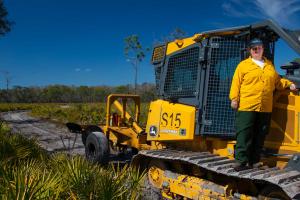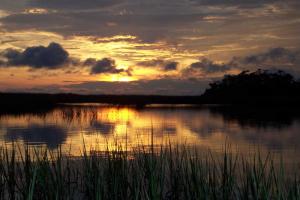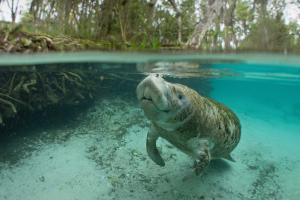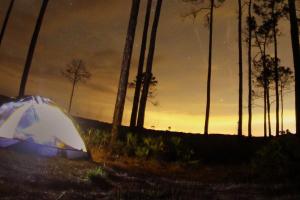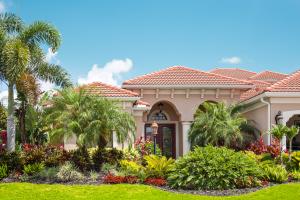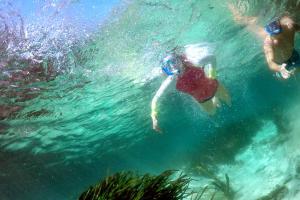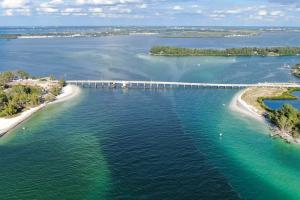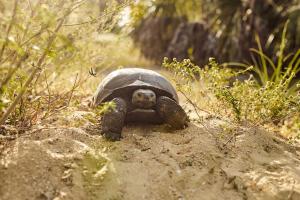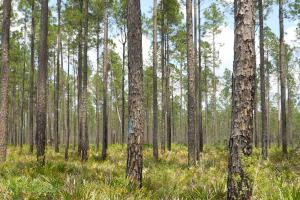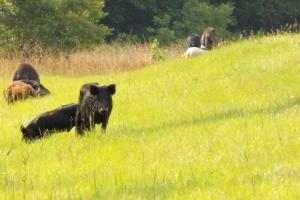Search Content
Displaying results 1941 - 1960 of 4920
As bureau chief of the Engineering & Project Management (EPM) Bureau at the Southwest Florida Water Management District, Scott Letasi is responsible for the District’s cooperative funding initiative program and District initiatives projects specifically related to the District’s flood protection area of responsibility. The EPM Bureau develops surface water models in the Watershed Management Program and implements the District’s Structures Capital Improvement Program…
Mission StatementOur mission is to protect water resources, minimize flood risks, and ensure the public’s water needs are met.Core Values
- Service Excellence
- Teamwork & Collaboration
- Self Management
- Professional Integrity
- Professional and Technical Excellence
As bureau chief of Information Technology, Tom Hughes is responsible for leading and managing the District’s Information Technology Bureau. The bureau works closely with internal and external customers to provide a comprehensive set of information technology services that support the District’s mission to protect water resources, minimize flood risks, and ensure the public’s water needs are met. These activities include the management of the hardware, software and data that…
Southwest Florida Water Management District
- Springs in West-Central Florida
- Recreation on District Land
- Lower Floridan Aquifer Exploration
- Minimum Flows and Levels (MFLs)
- …
The District is initiating an update to its Land Use Rules to allow for improved efficiency, protection of its resources and uniformity among other water management districts.A virtual workshop will be held Tuesday, December 1 at 5:30 p.m. Find out more »The District will be accepting public comment below on the draft Land Use Rulesupdate through December 7.
Manatees »
Springs are the most important wintering site for threatened manatees on Florida’s West Coast, as they provide thermal refuge when the Gulf of America’s temperature drops below 68 degrees. The springs in Kings Bay remain at a constant 72 degrees year-round. At colder temperatures, manatees may suffer from cold stress or hypothermia as they do not have a thick layer of blubber for protection. If cold weather persists, manatees may not leave the warmth of the springs for days…
Camping »
Whether you enjoy camping with modern amenities or you prefer to camp in the backcountry, the beauty of Florida’s wilderness is waiting to be experienced.Types of Camping on the DistrictPrimitive Camp AreasPrimitive campsites are provided for campers with tents. Only personal vehicles are allowed in the campsites. Primitive campsites are generally equipped with picnic tables, fire rings and/or grills and usually have portable toilets available for use by campers. Campsites…
Program OverviewFlorida-Friendly Landscaping™ is a set of nine guiding principles which help protect natural resources and preserve Florida’s unique beauty. A Florida-friendly landscape is beautiful yet saves water and protects the environment too. The University of Florida’s Florida Yards & Neighborhoods (FYN) Program provides science-based education on how to create a…
Septic tanks contribute up to 40% of the current nitrogen pollution in the District's five first-magnitude springs. If you have a septic system, it’s important to have the system inspected regularly and maintained as necessary.How do septic tanks impact springs?Wastewater from traditional or damaged septic tanks can leach into the ground, causing nitrates to enter the aquifer. When this happens, the nitrates eventually reach the spring, which results in…
The sandy coastal beaches of the Gulf of America attract many vacationing visitors. As part of these coastal beaches, the Southern Coastal watershed stretches 60 miles along the southern part of central Florida’s gulf coast. Visitors to the watershed will encounter the culture of Sarasota’s art community, the shark teeth-covered beaches of Venice and the fish-filled waters of Charlotte Harbor. In between these locations are some of Florida’s most productive estuaries,…
The District’s Emergency Operations Center (EOC) remains at Level 2 activation and EOC staff continue to closely monitor Tropical Storm Debby. All District offices are scheduled to be open Monday, Aug. 5.Please contact your supervisor if you are unable to work due to an extenuating circumstance from the storm.Staff should exercise caution for downed trees and power lines or localized flooding and follow any road closures. Always avoid driving through waters of unknown depth.…
The Peace River watershed is home to an extraordinary assortment of plants and animals. Some are common; some are extremely rare.Coreopsis, the state wildflower, is widespread. Its delicate yellow blooms brighten the riverbanks year-round. The riverbanks are also lined with palmettos, cypress, water locust, sweet gum, cabbage palm and live oak. Some of the trees have dark, muddy skirts. These are the high-water marks of the seasonal floods. Nearing the estuary, red,…
Frank Gargano was appointed ombudsman of the Southwest Florida Water Management District in November 2023. Gargano responds to public inquiries about District policies and practices. He provides information, answers questions and facilitates dispute resolution when issues arise between the public and staff. Gargano has more than 25 years of experience. Gargano earned his bachelor’s degree in environmental science and policy from the University of South Florida. Gargano…
The Southwest Florida Water Management District manages controlled burns on its lands, which are carefully planned burns used to manage forests. These controlled fires reduce wildfire risks by reducing excess vegetation, improving wildlife habitats and promoting new plant growth. The District ensures safety and efficiency in these operations, balancing ecological benefits with public safety. Fire in FloridaFire is one of the dominant forces that shape…
Public Invited to Help Identify Flood Prone Areas in the State Road 200 Watershed in Marion County »
The Southwest Florida Water Management District (District) is gathering information to improve identification of flood prone areas in Marion County. The District will provide a virtual public comment period now through Jan. 1, 2026, at …
This information is here to assist grantees during grant implementation.
- Grantees will complete and submit this Final Documentation and Report before May 8, 2026:
- Sample pre-posttest questions by topic - Use our collection of sample questions by topic to create a pre-posttest…
The Southwest Florida Water Management District (District) manages lands under its stewardship for the protection of water resources and natural systems through the application of effective, efficient and fiscally responsible land management practices. The purposes and attributes for which the lands were acquired provide the foundation for designating the appropriate land use and management strategies on the lands. As stewards of more than 343,000 acres of land within the 16…
Wild hogs may be infected with pseudorabies, leptospirosis or swine brucellosis.
Check with your veterinarian about the transmission of pseudorabies to your dogs.
Humans may contact leptospirosis and swine brucellosis by handling and dressing wild swine; however, the incidence is not likely. When harvesting a hog, the following protective measures should be taken:
- Use disposable rubber gloves while field dressing the animal
- Be…

